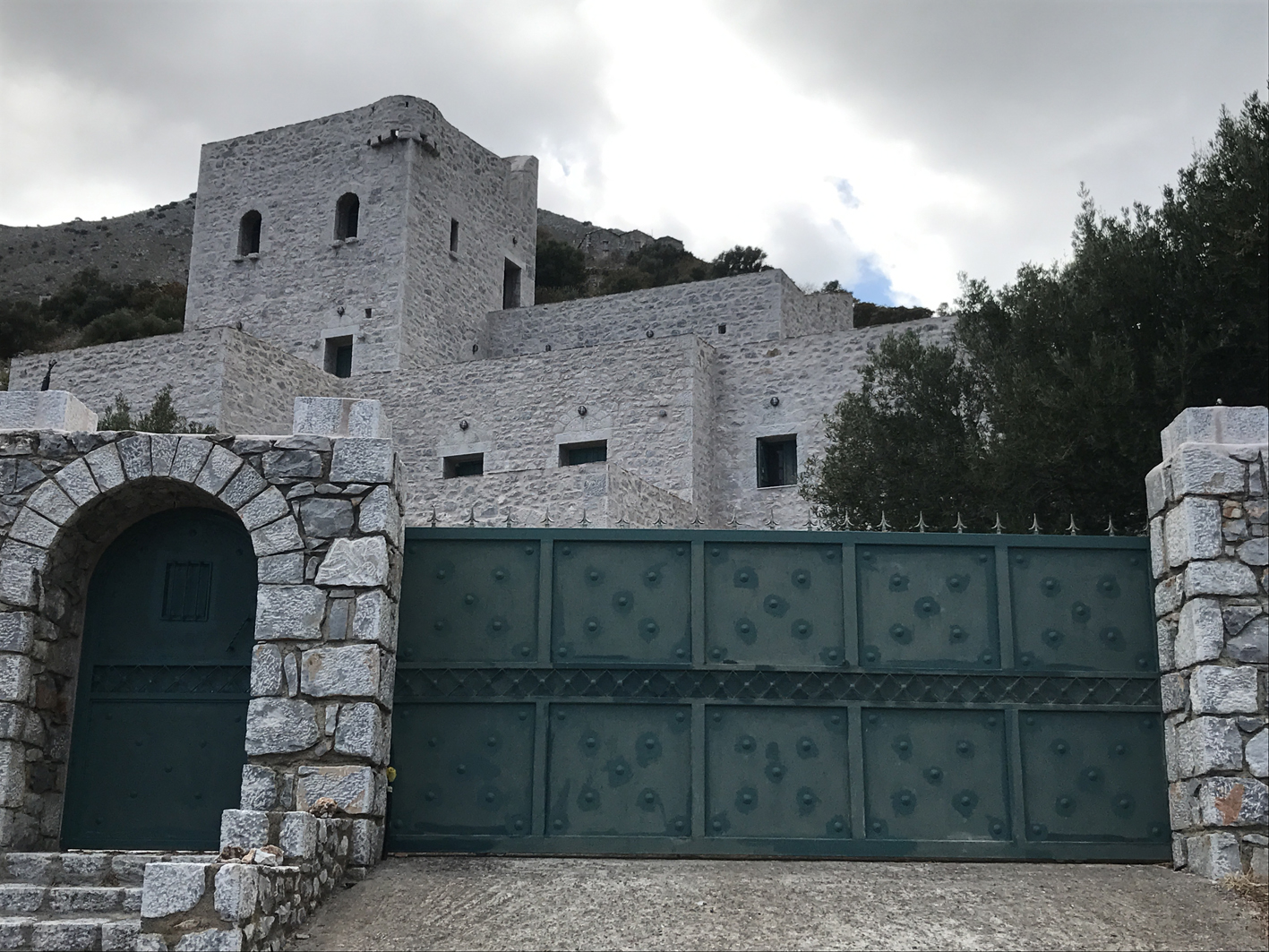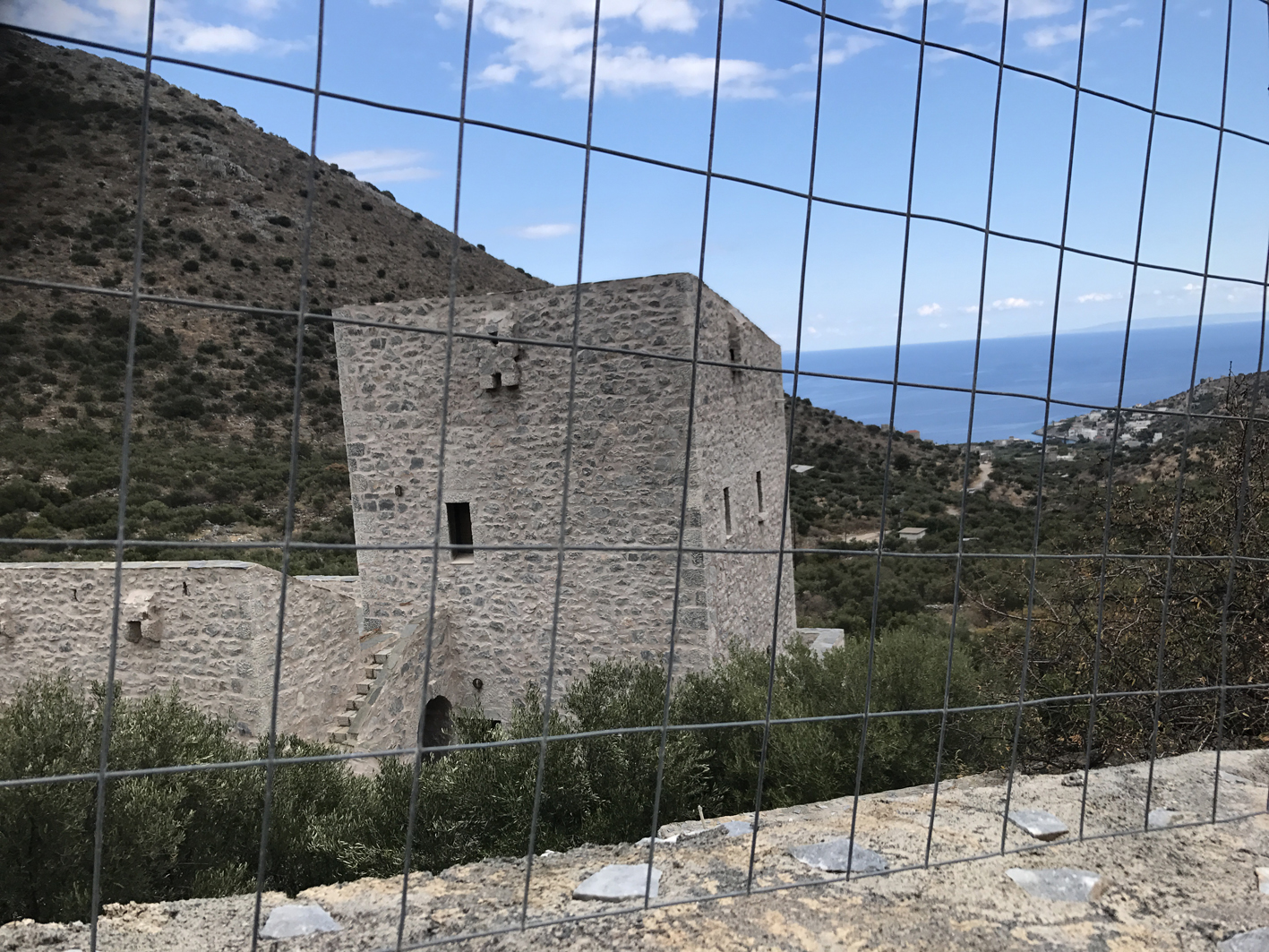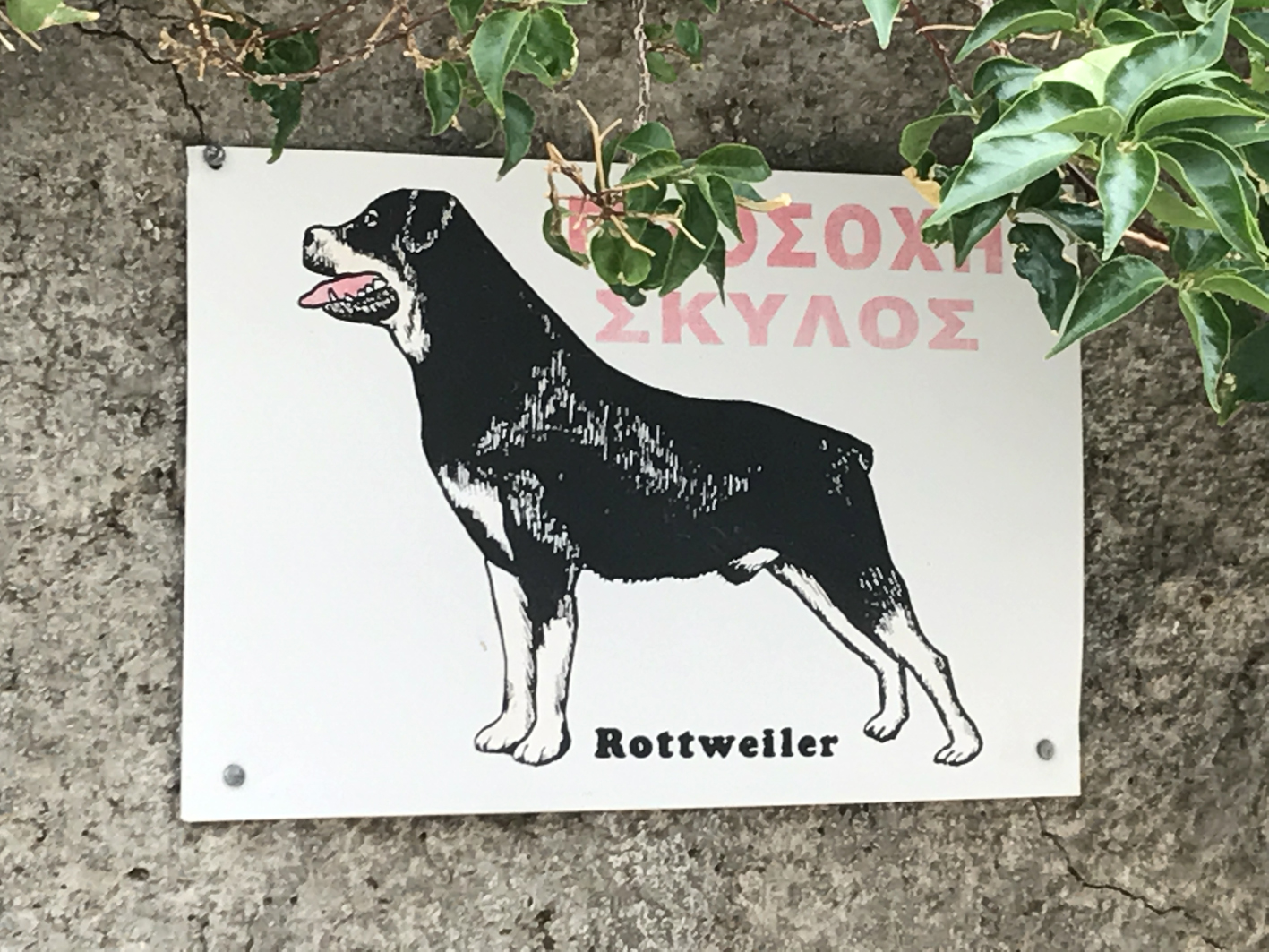The first people to live in the Mani were refugee Spartans, who preferred to flee to the windswept and inhospitable mountains, rather than live under foreign rule. Given that heritage (maybe read my Spartan blog (below) if you haven't done so) you'll not be surprised that the Maniots have a long-standing and apparently well-deserved reputation for ferocity and war-like behaviour. History doesn’t suggest they threw weak babies into ravines, but so fierce and combative were the inhabitants of this barren region that the various foreign powers that invaded the rest of Greece only vaguely managed to bring Maniots under control.
They were also excellent, ruthless pirates. And the women were super-tough too. In 1826, during the war of independence, 300 Mani women beat back invading Turkish soldiers with their sickles. (Their menfolk weren't available because they were off fighting the Turks elsewhere.) There's a monument in the car park at Dirou Caves.
When they weren’t fighting off foreign invaders, or robbing hapless visitors from passing ships, the people of the Mani - particularly those in the remote “Deep Mani” in the south - passed the time on vast, vicious, inter-clan feuds, some of which lasted for generations and decimated families. Think the Capulets and the Montagues in Romeo and Juliet displaced to a rocky peninsula in the middle of nowhere.
The feuds might start over personal stuff (“Don’t you look at my sister like that”), but basically it was all about land. The Mani is so rocky and inhospitable that any tiny patch that could be cleared of stones and terraced to grow wheat or vegetables was worth defending (if you owned it) or trying to steal off your neighbour, if you didn’t. Hence the Mani families or clans didn’t live in normal homes, but built mini-stone castles, called tower houses.
This one hasn't been renovated...
The defensive towers, which stood next to the building where the family lived, didn’t have a staircase, instead there was an internal ladder that could could be pulled up from inside. Turrets at the top and small windows meant you could shoot at your assailants (arrows first, then later rifles and cannons), and there were also “zematistres” or stone platforms for pouring boiling oil or water.
In the Exo Mani (the slightly more fertile northern part), villages tended to have only one clan - and therefore only one tower house. But in the Mesa (Deep) south, villages often had several warring families, so that there might be quite a few tower houses, with castle-to-castle battles taking place at close range. The aim was to destroy your rival’s tower, kill members of his family and take control of his land. So cute.
Apparently one clan feud in this village, Vathia, lasted 40 years and cost 100 lives.
Even decades after the Mani (reluctantly) became part of an independent Greece in the 1820s, the Maniots carried on fighting each other. The last family feud ended in 1870 and was only stopped when 400 members of the Greek national army moved in.
We spent a wonderful couple of weeks exploring Mani villages on foot and in the car. They are very splendid, perched on top of the rugged mountains, though when you come to take a photo, the tower houses somehow blend into the rocks around.
Look at the effort that went into those terraces - in their day they would have grown wheat and vegetables on these tiny strips. No wonder they fought to protect their land.
The Maniots are embracing tourism, and making a living out of visitors in a new way, but somehow I wonder whether that old animosity towards each other isn’t entirely gone. Old habits die hard.
Many of the tower houses have been gentrified and made into hotels or holiday homes, and no one grows wheat and veges on the bare soil of the disintegrating terraces (though there are still lots of olive trees). Gone are the cannons and the boiling oil to defend your house, but that doesn’t mean Maniots are inviting their neighbours in for tea. In place of guns are huge fences and gates, barbed wire, padlocks, large loud dogs, and “don’t even think about coming in here” signs. (Click across for some examples) Old habits die hard.
We saw one farm with eight large, nasty-looking dogs, and several places with huge gates guarding a ramshackle shed, or an abandoned field. You can’t be too careful with that bloody Dimitri at number 22.
Thanks to Geoff for most of the photos on this page











